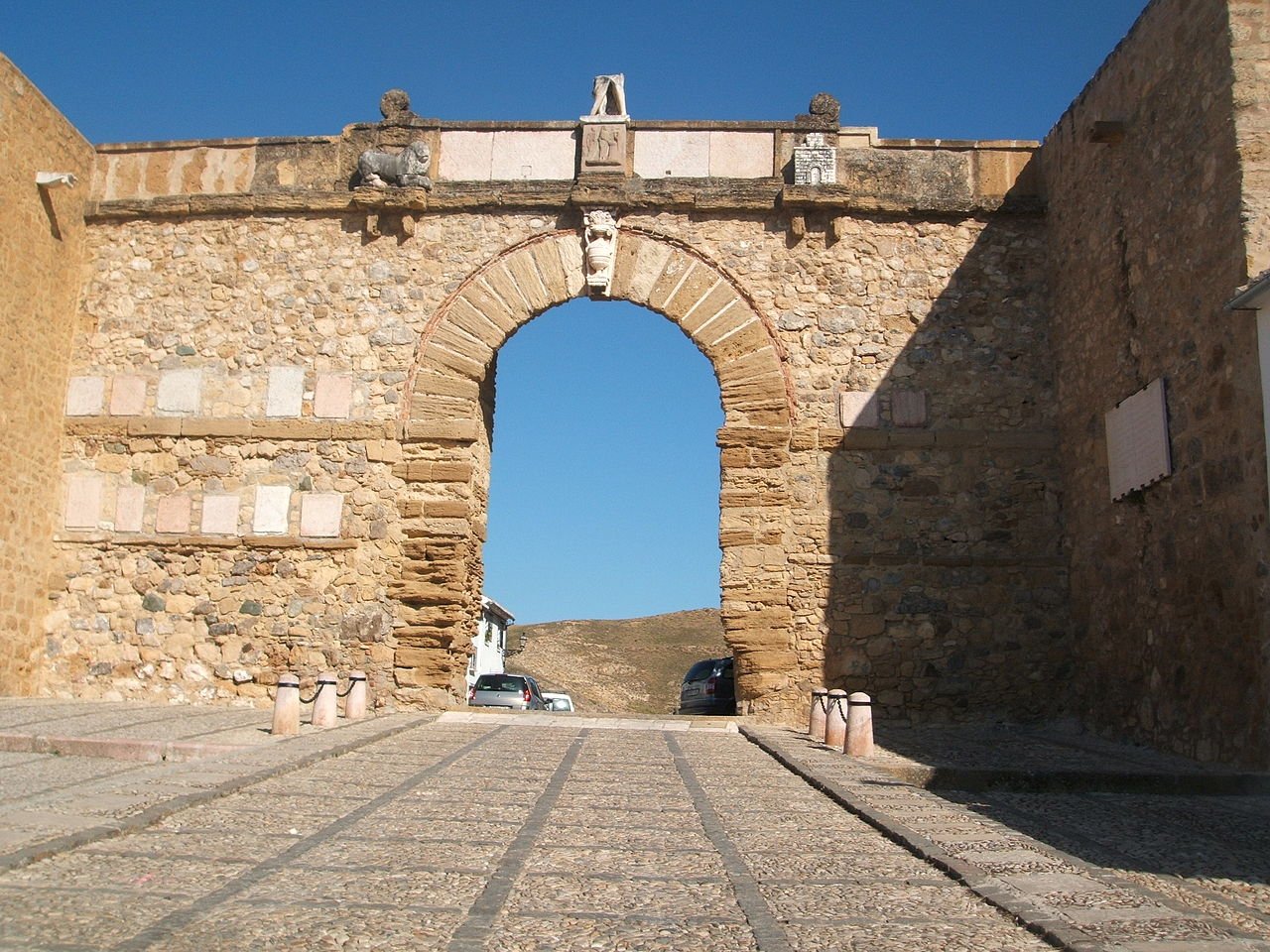The purpose of this structure was to serve as a monumental gateway to the city and to commemorate the visit of the monarch Carlos V to Antequera in 1526.
Architecture
The Arco de los Gigantes is an impressive example of Spanish Renaissance architecture, featuring ornamental elements in the Plateresque style. It is constructed of limestone and has the shape of a triumphal arch, with three semicircular arches flanked by two Tuscan columns on each side. At the top of the arch is a frieze decorated with reliefs representing mythological figures and heraldic shields.
One of the most striking features of the Arco de los Gigantes is the two colossal statues that crown the structure, known as the Gigantones. These statues represent Hercules and Julius Caesar and are reminiscent of the colossal statues erected at the entrances of Roman cities as symbols of power and authority.
Cultural Significance
The Arco de los Gigantes is a symbol of the identity and history of Antequera and an important landmark in the city. For centuries, it has witnessed numerous historical and cultural events and has been a meeting place and venue for celebration for the citys inhabitants.
In addition to its historical importance, the Arco de los Gigantes also holds great artistic and architectural value and has been praised for its beauty and elegance. It is one of the most photographed monuments in Antequera and a must-see for anyone visiting the city who wishes to learn about its cultural heritage.
Conservation and Tourism
The Arco de los Gigantes has undergone several restorations over the years to preserve its structure and architectural beauty. Today, it is one of the main tourist attractions in Antequera, drawing numerous visitors each year who come to admire its impressive architecture and learn about its history and cultural significance.



















